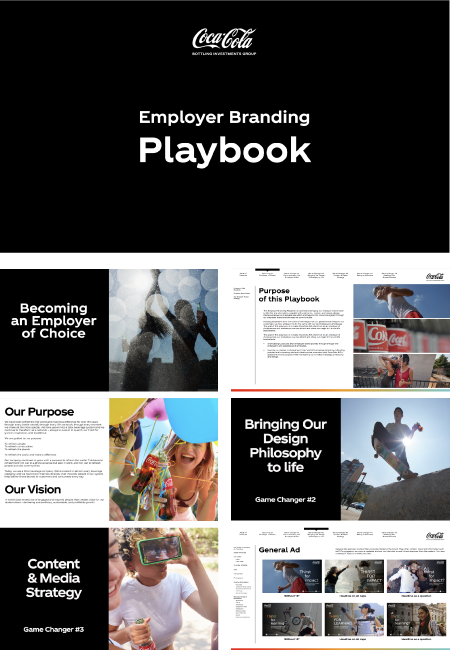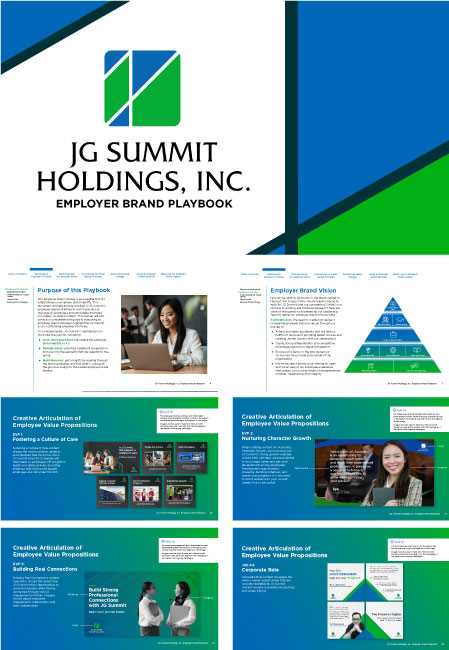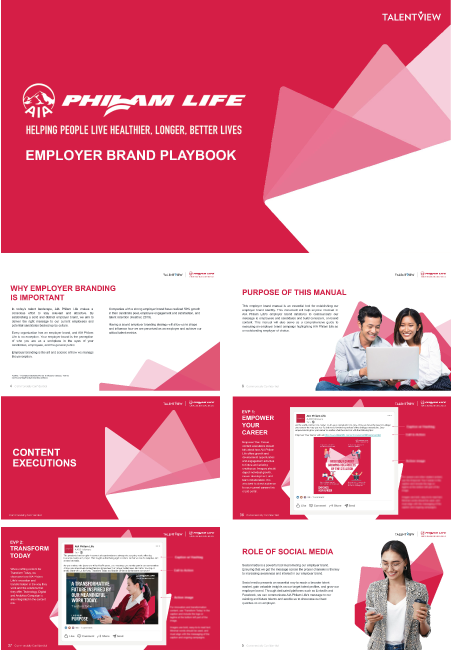Maximizing employee engagement in the workplace
As teams settle into new patterns of hybrid working it’s time to rebuild connections with some carefully chosen morale-boosting activities.

You can rely on your team. After all, they check-in every day. But are they just going through the motions? Or are they emotionally and mentally invested in what they’re doing and using their talents to the full?
While engaging employees is crucial to business success, it’s also a challenge, especially in the wake of the coronavirus pandemic where work has been interrupted, and when more people are working remotely. We take a closer look at employee engagement, why it matters, and how to get it.
What is employee engagement?
For a phrase we hear so often, the meaning of employee engagement is surprisingly hard to pin down. Is it happiness? Willingness to go the extra mile? Loyalty? Commitment? Passion? Turns out, it’s a mix of all these, plus a bit more.
HR experts Sage People talk about worker engagement in terms of ‘going beyond the basics’ and ‘making a connection at a deeper level.’ Gallup defines engaged employees as ‘those involved in, enthusiastic about, and committed to their work and workplace.’ Whereas the CIPD focuses on relationships, calling it ‘a combination of commitment to the organization and its values and a willingness to help colleagues.’
What engagement isn’t, is simply turning up every day and getting on with the work. It’s about a much deeper connection with a job, the people you work with, and the organization itself. It’s not always easy to measure engagement - or to achieve it. Only 35% of US workers felt engaged in 2019, according to Gallup. And that’s a 19-year high.
The difference between Employee Engagement and Employee Satisfaction
While there’s some evidence that job satisfaction can contribute to engagement, it’s not always the case. When the Society for Human Resource Management looked at satisfaction and worker engagement, it found that while 88% of people questioned were satisfied, they were only moderately engaged.
So employee satisfaction and engagement aren’t the same. Think about satisfaction as being content: a satisfied person is comfortable with what they do, and feels able to do it. They’re reasonably happy with their pay and working conditions. Things are OK. But they’re not challenged or motivated or invested. They’re putting in the hours, but aren't engaged with their work, the people around them, or the organization. And this affects their performance. While they may be content, they won’t necessarily have the motivation to perform any better than employees who aren’t satisfied. This can impact productivity and innovation.
If there's no definite link between satisfaction and engagement, what about happiness? Some commentators argue that, like being satisfied with your work, happiness doesn’t necessarily make you engaged. On the flip side, you might feel deeply engaged with your work while not being happy. However, research looking at the correlation between happiness and engagement shows that happy employees are more likely to be engaged. As Kevin Druse, author of Employee Engagement 2.0, says: “Engagement at work is not the same as happiness, but you need engagement to achieve happiness.” So when looking at how to achieve engagement, you can’t leave happiness out of the equation.
Why is employee engagement important?
Employee engagement matters because it impacts on an organization's critical areas - from performance to productivity to retention to reputation. Below we have listed the top 4 points.
1. It boosts productivity
Falling or flat productivity is a problem in some countries, including the UK, where over a third of workers questioned in one study admitted they’re productive for less than 30 hours a week. Employee engagement has almost magical effects on productivity, boosting it by up to 21%. And of course, that has a considerable impact on the bottom line.
So why are engaged workers so much more productive? One theory is that they put in more ‘discretionary effort.’ In other words, they’re more willing to go the extra mile, doing things even if they’re not expected of them and putting in an extra effort like staying late to complete their work or hit deadlines. 82% of engaged employees say they go above and beyond, according to Sodexo’s Move, Mould, Motivate report.
2. Improving staff retention
When employees are engaged, studies show that staff turnover drops by up to 59%.1 And that means a more stable - and productive - workforce. Plus, engaged employees can be evangelists for an organization. They’re almost 9 times more likely to recommend their company as a good place to work, helping build an organization’s reputation as an employee brand of choice.
This matters, because the costs of replacing a member of staff are enormous. Estimates suggest that in the US, replacing an employee is equivalent to anything between six to twelve months' salary. In the UK, that can cost up to £30,000.
And it's not just about money. When someone leaves, there's a disruption to teams and dents to morale. Knowledge may flow out of the organization. Businesses need to find and train recruits and continually repeat the process depending on the size of the churn rate. And new employees need time to get up to speed, which has an impact on that all-important productivity.
The risks of losing staff are high. According to a survey by one recruiter, over half of UK employees would like to leave their jobs. In particular, Millennials are likely to have itchy feet, with 49% saying they’d like to quit their job within the next two years. All the more reason, then, to make employee engagement a priority.
3. Lowering absenteeism
A disengaged employee keeps taking unplanned time off. The rest of the team have to pick up the slack, chipping away at engagement and morale, and increasing the workload.
More people become disengaged and take more unplanned time off. When it comes to engagement, absenteeism can be a vicious circle, and an expensive one at that - productivity losses related to sickness absence run into billions of dollars a year. Engaging employees, including boosting wellbeing, is vital. Studies show that engaged employees perform better, and engaged employees take less sick leave.
4. Improving customer service
The passion and commitment of genuinely engaged employees will show in everything they do - including interactions with customers. They’ll be willing to go the extra mile to create a good rapport and customer experience, making the customer more likely to recommend the company. Plus, they’re more likely to contribute ideas for how to improve the experience even further. All bottom-line boosters for companies.
The 5 drivers of Employee Engagement
There are numerous models of worker engagement. Some focus on outcomes, like discretionary effort, or better productivity, some see engagement more as a psychological state in itself. But however you choose to frame it, research shows key workplace areas to focus on to drive engagement.
1) Culture
More and more, people are looking for organizational cultures that mesh with their values. In particular, Millennials seek work with a sense of purpose and look for companies with corporate social responsibility values that reflect their own. Business leaders recognize the importance of culture in engaging people, but they also see it as a major challenge. Definition is a place to start. What are your organization’s mission and values? Do leaders live these? Do employees understand them? Be aware, though, that you need to be genuine in what you do - if you’re not, employees will see through it. 68% of millennials working in financial services, for example, said that companies might talk about diversity, but opportunities aren’t equal.
2) Wellbeing
Employee wellbeing - physical, emotional, social and mental - is closely linked with worker engagement. People who feel their wellbeing is high report being more attached to their organizations than those with a sense of lower wellbeing. It makes sense. Burned-out, overloaded employees who can’t make rigid working patterns work for them are unlikely to be able to stay engaged. And you can’t engage if you’re in physical pain at work: Estimates suggest that UK businesses lose 28.2 million working days because of musculoskeletal conditions.
3) Autonomy
Autonomy and engagement are a virtuous circle. Engaged employees have a sense of choice and freedom in the way they carry out their work, and 79% of autonomous employees are more engaged in their work than those who lack autonomy. But how do you achieve the balance between giving autonomy and offering support?
Micro-management is a major engagement killer. There’s little so guaranteed to undermine trust as having someone always looking over your shoulder. On the flip side, managers who are remote and inaccessible, who never or rarely give guidance or feedback, will also undermine engagement. People need the ability to work independently. But they also need clear goals they’ve contributed to framing, to get feedback on their performance, and to know who to reach out to when they need help.
With remote working and hybrid working increasingly the norm, it’s good news that the increased autonomy and flexibility they bring can lead to greater engagement. But when it comes to remote employee engagement it’s about striking that balance between trusting employees to work autonomously and providing the tools they need to stay connected with managers and colleagues.
4) Openness
Management transparency is powerful: one study rated it the number one factor contributing to employee happiness. But openness and transparency work both ways. To engage with an organization, employees need to know what’s going on. And they also need to be able to make their voices heard across the business and know they count.
5) Communication
Communication is the central point linking all engagement drivers. Open channels and responsive tools enable organizations to share cultural values, wellbeing guidance and company information. Things that are especially relevant when it comes to remote employee engagement. These tools also enable remote employees to input into goals, tap into support, and access feedback.
7 signs of disengaged employees
It’s easy to imagine people falling into two camps when it comes to engagement: the enthusiastic, invested, and engaged and the disgruntled, alienated, and disengaged. Most people fall somewhere in the middle. According to Gallup, around 52% of employees are simply not engaged. These people turn up every day and make the minimum contribution while on the look-out for another job. But they’re not actively disengaged.
Another thing to be aware of is that engagement isn’t uniform across organizations. Research shows that place in the hierarchy, occupation and length of service can all impact on engagement. Senior people tend to have a higher chance of being engaged, while engagement can slacken off after someone has worked for an organization for more than a couple of years. Job roles that are more challenging tend to have higher levels of engagement.
Some of the signs of disengagement are obvious - it will probably be apparent that an actively disengaged person is unhappy. Some aren’t so clear, especially when it comes to remote employee engagement. But as increasing engagement can be so valuable for your organization, it’s essential to recognize the warning signs that you’ve got a problem and act on them. Here are seven disengagement signs to look out for.
1. Declining performance
This can happen slowly, so it’s not always easy to spot. A disengaged employee may start missing deadlines, their output may fall, or their work quality may drop.
Having proper oversight and frequent check-ins will enable managers to ask the right questions and prevent problems. It may be that the person is struggling because they don’t feel they have the right skills or tools to do the work - or they may feel it’s not challenging enough and simply be bored.
2. Unhealthy working patterns
We know that engaged employees are less likely to take unplanned time off. But absenteeism isn’t the only sign of an engagement problem. Presenteeism - working when unwell, and leaveism - working when you should be on holiday - can also be a warning that people aren’t engaging as they should. And these issues are common. Eighty-nine percent of people who responded to the CIPD’s 2020 health and wellbeing at work survey reported seeing presenteeism, and 73% have seen leaveism. Be on guard for out-of-control workloads and policies that aren't flexible enough to allow a good work-life balance.
3. Withdrawing socially
If someone who usually joins in with a water cooler or virtual chat becomes withdrawn, this may be a sign of disengagement from work and the organization. On the other hand, it may be because of a personal problem, or even bullying, so managers shouldn’t jump to conclusions but rather ask thoughtful questions. Another thing to watch for is when someone stops participating in calls and meetings. It could be a sign that they’re becoming alienated from these processes or suffering a confidence crisis.
4. Undermining the achievements of colleagues
It’s only the most actively disengaged employees who are likely to do this. They’re so unhappy at work that they’re not content simply not to make an effort - they disparage the efforts of others and often, the company itself. This can be hugely damaging to morale, so organizations need to tackle it directly.
5. Not working well with others
Poor teamwork and rudeness to colleagues are likely to be signs of disengagement. These can lead to damaging conflict in the workplace and need to be challenged by managers.
6. Doing the minimum
While engaged employees are likely to put in discretionary effort, those who are disengaged will be reluctant to go the extra mile no matter how much it might help their colleagues. Efficient and productive workers are often in control of their workloads and, consequently, their work-life balance. But it can also signal poor engagement - if an individual is simply not engaged, they’ll do their allotted hours and no more. If they’re actively disengaged, they’re likely to show up late and leave early regularly.
7. Lack of interest in training or learning
The disengaged employee may reject new challenges and turn down opportunities to learn new skills or progress within the company because they don’t see a future. If organizations can do nothing to rekindle their interest, it may be time to move on.
How to improve employee engagement
Employee engagement initiatives cover the big and small picture. Some policies will feed into the engagement picture at a more strategic level, including diversity and inclusion policies and the definition of the organization’s vision and values. Organizations may also wish to build a stand-alone engagement strategy, defining goals and KPIs, and choosing which drivers of engagement to prioritize.
On a more tactical level, improving worker engagement is a day-to-day activity. Managers need to demonstrate the company values in what they do, share best practices, keep two-way communication flowing, and be aware of what they can do to improve engagement for the individuals in their teams.
This article first appeared in Workplace Blog:
7 must-do’s to connect and empower Employees


TalentView is a leader in employer branding strategy, design and technology. With teams across the ASEAN region, TalentView’s professional solutions help to create memorable experiences across the talent lifecycle to attract, engage and retain talent. Working directly with business leaders in Fortune 1000 companies, TalentView is well-positioned to provide talent insights and is an accredited partner of key global players including Workplace from Facebook, Talegent, Indeed, Hootsuite, Digimind and PhoenixATS.
Copyright © TalentView Asia, 2023 | Privacy Policy
















